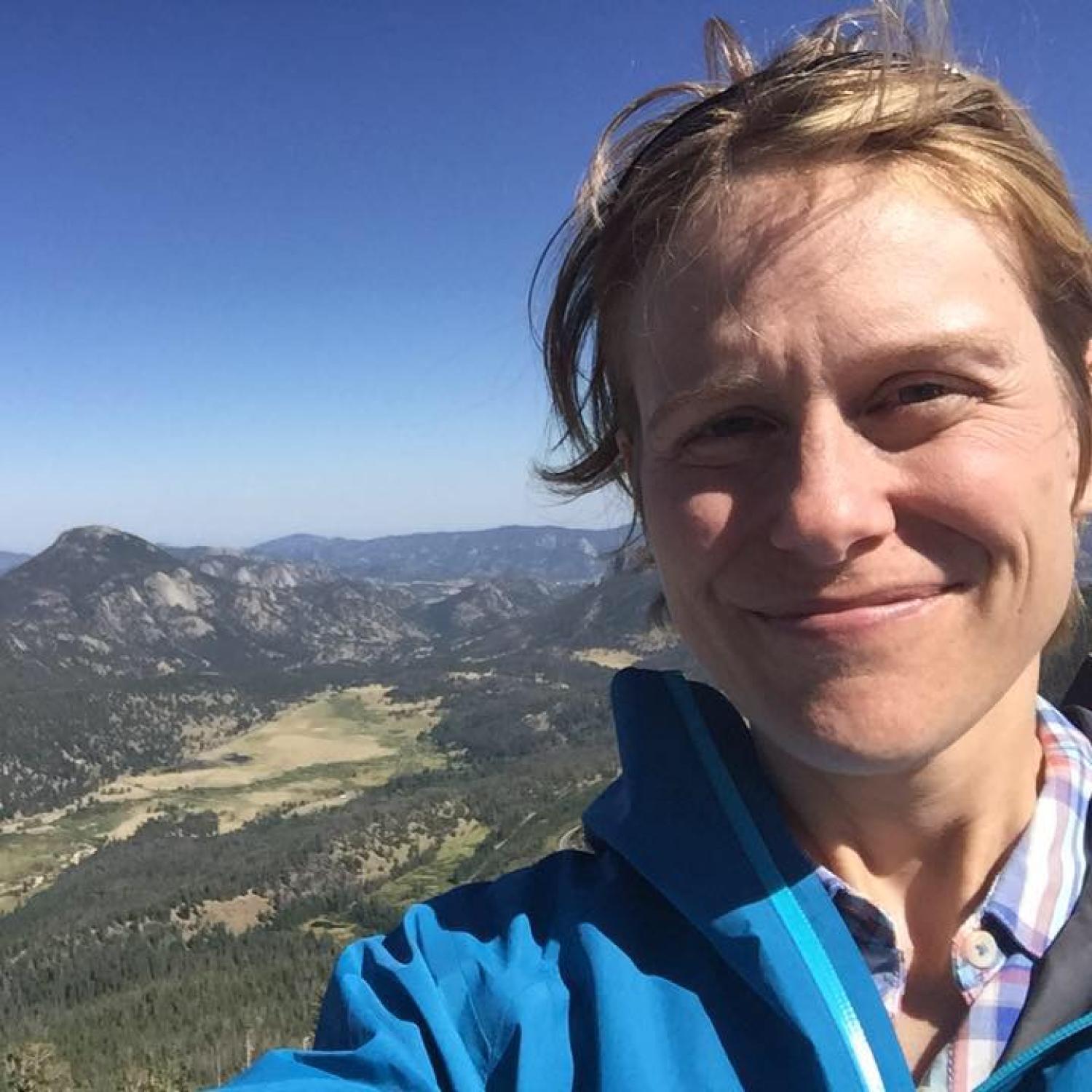Five Questions for the Fellows: Grace Hood
As part of the Ted Scripps Fellowships in Environmental Journalism, award-winning journalists have been coming to CU Boulder for 21 years. Fellows embark on a year of courses, projects, field trips, seminars and more — taking advantage of everything university life has to offer. This series is a chance to get to know this year’s cohort of talented journalists beyond what a typical bio page will tell you.
Grace Hood has covered water, science, and energy topics across the American Southwest as Colorado Public Radio’s environment and climate reporter since 2015. Throughout more than a decade in public radio, she’s profiled octogenarian voters worried about climate change, scientists tracking underground mine fires, a visually impaired marijuana farmer and a homeowner who lives next door to Colorado’s first underground nuclear fracking experiment. She has a particular interest in the rise of citizen science (public participation in scientific research) to help measure air pollution across the West.
Why did you choose to cover environmental topics and is there any memory that stands out as formative in your decision?
I grew up in a household where we got all the major newspapers, like The New York Times, the Des Moines Register, and also Science magazine. And NPR, of course, was on in the background constantly. At dinner we were just expected to have opinions about major news events and that included a lot of environmental issues. And also, the natural environment was just such a critical part of my upbringing. I mean, my brother and I played for hours in the woods behind our house. So, I was always tuned in to the environment. And my brother became a biologist.
I was a general assignment reporter for many years. During my time as a GA reporter [in the early 2010s], I remember there was one time I did a story about how biologists across different disciplines were able to use drones to count migrating birds. And it was such a cool thing to see this new technology in action. I really loved the story I was able to tell about science and action. And from that point on, I was really hooked.
What do you think is the most important environmental story happening today?
I find myself increasingly drawn to this intersection of climate change and environmental racism. I think the public's attention to climate change has come a long way, but it needs to go further. It's the same with some of these racist policies that have contributed to the framework of cities that we live in today.
For example, in the 1930s, federal officials redlined some neighborhoods in Denver and marked them as risky investments because the residents who lived there were black. And today those same places are some of the hottest parts in town during the summer, with very few trees and heat-trapping pavement. Now, the city of Denver has an initiative to plant trees and start to mitigate that problem. But that's going to take decades to really chip away at and correct the problem.
What is the most surprising thing you have learned at CU or in the Boulder community since you started the fellowship?
There are so many. But one of the most delightful things I've come across is NEST Studio for the Arts. It was started by a former Scripps Fellow, Erin Espelie. I think that NEST does a really amazing thing. It combines artists with scientists, and they come out with some really amazing projects. As I understand it, NEST gives them a small grant to approach difficult problems.
One example that I thought was so cool was this beautiful sculpture-like product that actually detoxifies the air at nail salons. Another pairing combined an artist who does paintings with a communications PhD [student], and they cataloged all the native grasses and species on campus, and they produced this beautiful artistic natural guide to campus that's now in the Boulder Bookstore.
What has been the most helpful part of the Scripps Fellowship so far?
I think it's the supportive environment, community, and people. The leaders of the Scripps program, Hillary Rosner and Tom Yulsman, have just really gone out of their way to create a space for the fellows to get to know each other, even during a pandemic. Erin Ashbaugh is also playing an amazing role in supporting the Scripps Fellows. And I see that the community they've created extends to my classes and instructors who really respect the Scripps Fellowship program and the quality of work that it produces.
I've also been impressed with the number of tutorials available on campus. For example, Phil White, I think he's the Earth, Environment and GIS librarian — he regularly holds online workshops that have to do with mapping, cartography and other associated programs. I've regularly attended a few of those online workshops and they've been very helpful to me.
What are your favorite things to do outside of journalism?
I'm definitely an outdoors person. I love hiking and cross-country skiing. But one of my favorite activities during the pandemic has actually been indoors. I volunteer at the Boulder Public Library once a week and sort all the books that are returned to the main branch of the library.
The library now has to quarantine all the books for a few days in a room. And so, I help with pre-sorting all the returns. I just really love the opportunity — one, to get out of my apartment — but two, in this time of isolation and introversion, I really love being around people who are just gathering books and learning. And, you know, I love seeing all the books that people are reading. It really reminds me that there's a great big world out there to explore.


